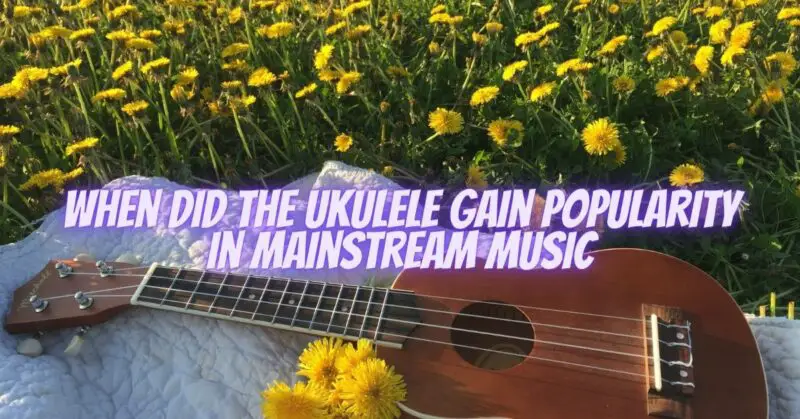The ukulele, with its distinct sound and playful charm, has made occasional appearances in mainstream music over the years. While its roots can be traced back to the late 19th century, it wasn’t until certain key periods in history that the ukulele gained significant popularity in mainstream music. Here’s a closer look at those moments:
- Early 1900s – Rise of Hawaiian Music: In the early 1900s, Hawaiian music experienced a surge in popularity on the American mainland. This period coincided with the Panama-Pacific International Exposition held in San Francisco in 1915, where Hawaiian musicians showcased their skills and introduced the ukulele to a wider audience. The catchy, tropical sound of the ukulele became synonymous with Hawaiian music, captivating listeners and contributing to the instrument’s initial mainstream recognition.
- 1920s – The Jazz Age and Vaudeville Era: The 1920s, known as the Jazz Age, marked a significant period of ukulele popularity in mainstream music. During this time, the ukulele became closely associated with the emerging jazz scene and vaudeville entertainment. Famous musicians such as Cliff “Ukulele Ike” Edwards and Roy Smeck popularized the instrument through their performances and recordings, introducing it to a broader audience and cementing its place in popular music.
- 1950s – Post-World War II Era: Following World War II, the ukulele experienced another wave of popularity in mainstream music. This era, characterized by post-war optimism and the rise of popular music genres like pop and rock ‘n’ roll, saw the ukulele making appearances in hit songs and performances. American television personality Arthur Godfrey played a significant role in promoting the ukulele during this time, both on his TV show and through his own recordings.
- Late 20th Century – Revival and Contemporary Usage: In the late 20th century, the ukulele experienced a revival in mainstream music. Artists like Israel Kamakawiwo’ole, whose rendition of “Over the Rainbow” became iconic, brought the ukulele back into the public consciousness. Additionally, the Ukulele Orchestra of Great Britain gained popularity for their unique interpretations of well-known songs. These artists, along with others, showcased the versatility and charm of the ukulele, introducing it to new audiences and inspiring a fresh generation of players.
- 21st Century – Internet and Social Media Era: The 21st century has witnessed a remarkable resurgence of ukulele popularity, thanks in large part to the internet and social media. Platforms like YouTube and TikTok have provided a global stage for ukulele players to showcase their skills and creativity. Talented musicians, such as Jake Shimabukuro, Taimane Gardner, and The Ukulele Teacher, have gained widespread recognition through their online presence, captivating millions with their ukulele performances. This digital era has facilitated the sharing of ukulele music and tutorials, fostering a thriving community and contributing to the instrument’s continued popularity in mainstream music.
The ukulele’s presence in mainstream music has ebbed and flowed over the years, with distinct periods of heightened popularity. From its initial introduction in Hawaiian music to its presence in jazz, vaudeville, pop, and contemporary genres, the ukulele’s infectious sound has left an indelible mark on mainstream music history. Today, its versatility and accessibility continue to inspire musicians and delight audiences, ensuring the ukulele remains a beloved instrument in the world of mainstream music.


